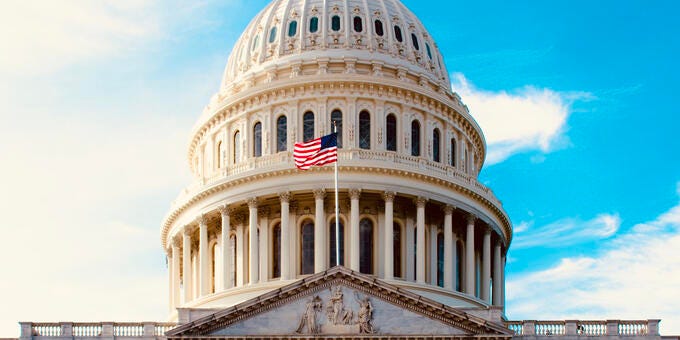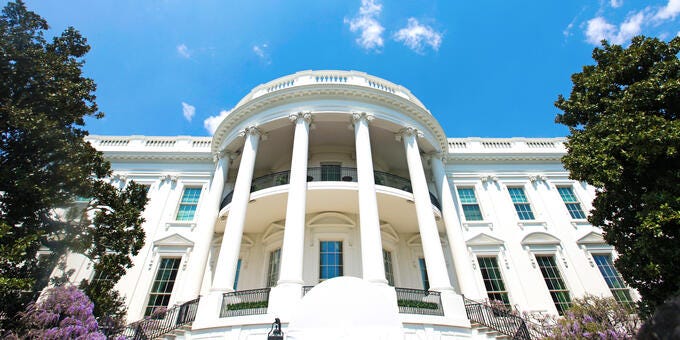
How to Qualify for the New Jersey Aspire Program
- Published
- Jun 4, 2025
- Topics
- Share
The New Jersey Aspire Program (Aspire), a cornerstone of the state’s Economic Recovery Act (ERA) of 2020, continues to be a catalyst for development. The program offers substantial tax credit incentives to developers tackling financing gaps in commercial, residential, and mixed-use projects. The program was revised in January 2025 (Aspire 3.0) with the goal of making it easier for developers to finance projects, especially in underserved areas.
What is the New Jersey Aspire Program and Economic Recovery Act (ERA)?
The ERA, a $14 billion initiative, aims to stimulate job growth, property development and improvements, and community partnerships across New Jersey.
Aspire is designed to bridge financing gaps that often hinder development projects. By providing transferable tax credits based on a percentage of project costs, the program encourages investment in designated incentive areas, fostering economic revitalization.
Key Changes as part of Aspire 3.0 (see below for additional details)
- Tax credits can be sold to the New Jersey Department of the Treasury at 0.85 cents on the dollar.
- Three New Government-Restricted Municipalities (GRMs), Camden, East Orange, and New Brunswick, can receive up to 80 percent of the eligible costs.
- Increased award caps for the original GRMs (Atlantic City, Trenton, and Paterson) to 85%.
- Transformative residential mixed-use project square footage lowered from 50,000 to 30,000 square feet.
- Planning Area 2 and Designated Centers under the state redevelopment plan are now eligible (check the state site for details).
- A warehouse distribution or fulfillment center with at least $10 million in environmental remediation costs is now eligible.
Eligibility Requirements for Aspire
To qualify for Aspire, the development (or redevelopment) project must meet certain criteria based on the scope of the overall development project, such as:
Developer Requirements
- Demonstrate through the New Jersey Economic Development Authority (NJEDA) analysis that the redevelopment project is not economically feasible without the award.
- Demonstrate that a project financing gap (including review of reasonable and appropriate rate of return) exists, and a redevelopment project will generate a below-market rate of return.
- Project must be in a designated incentive area (excludes film projects).
- Include development equity participation of at least 20 percent of total development costs or 10 percent in a GRM.
- Commercial projects must result in a net positive economic benefit to the State as demonstrated through a net benefit test, with a threshold of 160 percent for all commercial project unless located in a GRM, which lowers the benefit test to 125 percent, or research/tech focused incubators of at least 50,000 square feet, major cultural institutions, and properties awarded state or federal historic tax credits with certain exceptions related to food delivery or health service centers as defined
- A letter of support from the municipality where the project will be located is required at the time of application for commercial and residential projects.
- Must apply prior to March 1, 2029.
The developer and any co-applicants must be in good standing with the New Jersey Department of Labor and Workforce Development, the New Jersey Department of Environmental Protection, and the New Jersey Department of the Treasury. If not in compliance, a corrective action plan must be resolved with the respective departments prior to approval. Finally, a valid tax clearance certificate from the New Jersey Division of Taxation with the New Jersey Department of the Treasury is needed prior to the grant agreement being finalized.
Other requirements to qualify include:
- Comply with all environmental laws and regulations.
- Projects must meet affirmative action requirements for all work included in the project cost and for the two years after the tax credit certificate is issued.
- Maintain minimum environmental and sustainability standards.
- Pay prevailing wages to construction and building service workers.
Commercial Project Requirements
- The project must be in an eligible incentive area, which may include aviation, port districts, or within half a mile of a mass transit location (bus, rail, ferry stations).
- Commercial projects must have a minimum of 50,000 square feet of retail or commercial space, excluding parking. If the project is located in a GRM, this space requirement is reduced to 25,000 square feet.
- Health Care or Health Services Centers in eligible locations are reduced to 10,000 square feet
- The developer must contribute a minimum equity contribution of 20 percent of the total project cost (or 10 percent if located in a GRM).
- Must have a letter of support from the governing body of the municipality, and if the project costs are greater than $10 million, must also enter into a Community Benefits Agreement with the NJEDA.
Residential Project Requirements
- A project located in a GRM must have a minimum of $5 million in project costs.
- Projects in municipalities with a population of less than 200,000 must have a minimum of $10 million in project costs.
- A project in a municipality with a population greater than 200,000 must have a minimum of $17.5 million in project costs.
- All newly constructed residential projects must have a minimum of 20 percent of the total units reserved for low- and moderate-income housing.
Transformative Project Requirements
Transformative projects are projects above those considered in scope for the Aspire Program and of special significance to the state of New Jersey. Program requirements include the following:
- The project must be in an eligible incentive area, which may include aviation, port districts, or within half a mile of a mass transit location (bus, rail, ferry stations).
- Project costs are expected to exceed $150 million.
- The building must be above 500,000 square feet, excluding parking or 250,000 square feet for film studios, with no more than 50 percent of the square footage being point-of-sale retail, including hotels.
- Commercial projects in enhanced areas are subject to a minimum of 300,000 square feet, while commercial projects located in a GRM are subject to a minimum of 200,000 square feet
- For commercial projects (with the exception of film studios), create at least 500 new full-time jobs in a high-priority targeted industry.
- For residential projects:
- Must be in a GRM or distressed area.
- A reservation of an additional 20 percent of new residential units for low- and moderate-income households on top of the standard 20 percent.
- Include at least 700 newly constructed residential units.
- Mixed-use residential projects must provide at least 30,000 square feet of commercial space (excluding parking), and the minimum residential units is as follows:
- In a GRM, at least 200 or more of newly constructed residential units.
- In an enhanced area, at least 300 or more of newly constructed residential units.
- In a non-restricted area, at least 400 or more of newly constructed residential units.
Affordability Controls for Residential
- Aspire legislation requires affordability controls to be aligned at minimum with controls established pursuant to the Fair Housing Act, which include requirements concerning the bedroom distributions, affordability averages, and long-term deed restrictions of residential units constructed for occupancy by low- and moderate-income households. Any residential-unit project must set aside at least 20 percent of the units as affordable.
- Bedroom distribution for restricted units that are not age restricted shall be as follows:
- The combined number of studios and one-bedroom units is no greater than 20 percent of all restricted units
- At least 30 percent of restricted units are two-bedroom units
- At least 20 percent of the restricted units are three-bedroom units
- Remainder may be allocated at the discretion of the developer
- At least 50 percent of the restricted units within each bedroom distribution shall be low-income units (50 percent of median income). The remainder may be moderate-income units (between 50 percent and 80 percent of area median income), provided that at least 10 percent of the restricted units shall be very low-income units (30 percent of area median income).
How Tax Credits are Calculated for Aspire
Aspire addresses the "project financing gap," the difference between project costs and available financing.
Project caps vary by projects located in certain designated areas. For example, 85 percent of eligible costs up to $120 million for projects located in Atlantic City, Trenton, and Paterson, New Jersey, with 80 percent of eligible costs up to $120 million for projects located in Camden, East Orange, and New Brunswick. 60 percent of eligible costs up to $90 million for Low Income Housing Tax Credit projects or projects in qualified incentive tract or enhanced area municipality with an MRI distress score of at least 50, with enhanced areas being projects located in Jersey City, Newark, Elizabeth, Passaic, Hoboken, Paulsboro, and Salem. All other eligible projects are capped at 50 percent of eligible costs up to $60 million. Transformative projects caps are subject to the same percentages listed above, but the cap is increased to up to $400 million.
Tax credits are calculated as a percentage of eligible project costs and are determined by both the location of the project (projects located in GRMs or enhanced areas are subject to larger credits) and project type (commercial projects generally provide higher credits than residential):
- Tax credits awarded through the Aspire can be sold for no less than 85 percent of their nominal value. As part of the Aspire 3.0 program, the Department of Treasury may purchase unused tax credits under the Aspire program, including tax credit transfer certificates issued by the director in lieu of a tax credit allowed under the program. The director shall pay an amount equal to 85 percent of the credit amount.
- Residential projects financed in part by LIHTC can sell tax credits for no less than 65 percent of their nominal value.
- Residential projects that are not using LIHTC and have a plan approved by NJHMFA and NJEDA can sell credits for at least 75 percent of their nominal value.
Aspire Program Reporting and Compliance
The program has reporting requirements. Once approved, the developer will be required to sign an approval letter and incentive award agreement, which would lay out the defined terms for the tax credit.
Upon completion of the project, the developer will be required to submit the total capital investment and other eligibility requirements as well as certify project is still operating in the manner that was consistent with the application process.
New Jersey Aspire Program Assistance
If you're considering a development project in New Jersey, contact us today for guidance on navigating Aspire. We can help you determine your eligibility and maximize your potential tax credit benefits.
What's on Your Mind?
Start a conversation with Christopher












